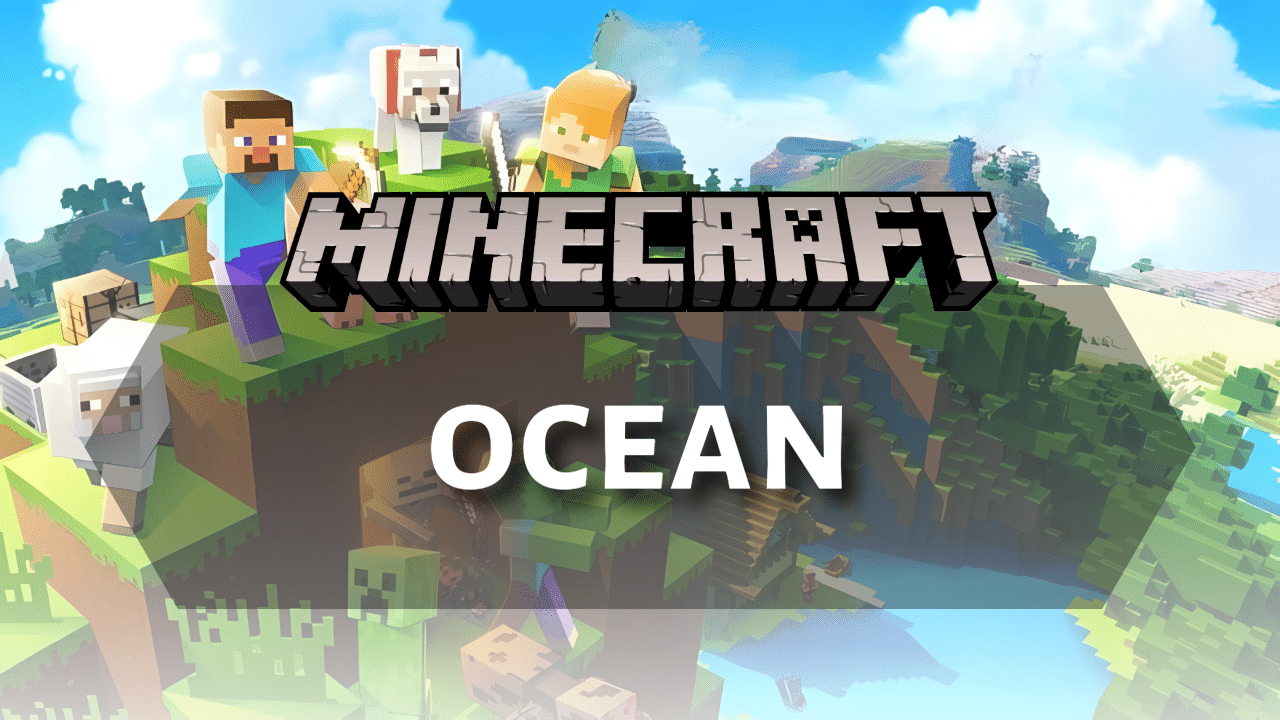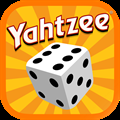
Introduction
Hello! This guide will help you navigate the vast and varied oceans of Minecraft Bedrock Edition. Oceans are a significant part of the Overworld, offering diverse biomes, resources, structures, and challenges. Exploring the depths of these biomes can lead to valuable treasures, but also requires preparation and strategy to survive. This Minecraft Bedrock Ocean Guide will cover everything from identifying different ocean types to exploring underwater ruins and raiding formidable ocean monuments, ensuring you are fully equipped for the adventure ahead.
Understanding Minecraft Bedrock Ocean Biomes
Oceans in Minecraft Bedrock come in several distinct biomes, each with unique characteristics. The standard Ocean biome is common, with a seafloor primarily made of gravel, along with patches of clay, sand, and dirt. You’ll find seagrass and kelp here, as well as mobs like cod, dolphins, and squid. Shipwrecks and ocean ruins can generate in all ocean biomes, including this one.
Deep Ocean biomes are significantly deeper than regular oceans, typically reaching around Y=30. These deeper waters can also contain underwater caves and ravines, and crucially, are the only place where ocean monuments generate. You’ll encounter the same mobs as in regular oceans, such as dolphins, cod, salmon, and squid, and tall seagrass grows more frequently here. Deep Ocean biomes also feature magma blocks, bubble columns, and obsidian.
For colder seas, you have Frozen Ocean biomes, characterized by ice-covered surfaces and icebergs made of snow blocks, packed ice, and blue ice. Unlike other oceans, frozen oceans lack seagrass and kelp, creating a barren seafloor. Mobs found here include polar bears, strays, salmon, cod, and rabbits. Deep Frozen Ocean variants also exist, and while icebergs still generate, the water surface is entirely frozen in Bedrock Edition. Ocean monuments can also be found in Deep Frozen Oceans.
Cold Ocean biomes are similar to regular oceans but have a darker indigo water color and often border cold land biomes. The seafloor is mainly gravel, and you’ll find less seagrass compared to other non-frozen ocean types. Salmon and cod spawn here, and dolphins can be found in Bedrock Edition. Deep Cold Ocean biomes are deeper versions that can generate ocean monuments and have more tall seagrass.
In warmer regions, you’ll find Lukewarm Ocean biomes with light blue water and sandy seafloors. These biomes have more seagrass and less kelp compared to colder oceans. Tropical fish, cod, dolphins, and salmon can be found here. Ocean ruins in lukewarm oceans are made of sandy materials. Deep Lukewarm Ocean biomes are deeper and can contain ocean monuments and more tall seagrass.
The warmest ocean biome is the Warm Ocean, distinguished by its aquamarine water and the presence of vibrant coral reefs. The seafloor is primarily sand, and you’ll find coral blocks, coral, coral fans, and sea pickles, along with seagrass. Mobs here include dolphins, tropical fish, and pufferfish. Notably, warm oceans do not have deep variants, and therefore, ocean monuments cannot be found in them.
There is also an unused biome in Bedrock Edition called Legacy Frozen Ocean, which appears as flat ice without icebergs and can only be accessed through add-ons.
Preparing to Explore the Ocean in Bedrock
Exploring the ocean effectively in Bedrock requires some preparation. Having a boat is essential for traversing the surface quickly and efficiently. In Minecraft Bedrock Edition, especially on mobile, boats are a great way to travel across vast ocean biomes without getting bogged down by swimming or slow movement. Boats are easy to craft, requiring just five wooden planks, and they can be used to navigate across both shallow waters and the deep ocean.
On mobile, controlling a boat is simple—just tap on the screen to move in the direction you want to go. Boats can also carry one player and a passenger, so if you’re exploring with a friend, you can both travel together. They’re a fantastic tool for quickly reaching distant ocean structures, like shipwrecks or ocean monuments, allowing you to conserve your stamina for underwater exploration. Remember, boats can also be used to jump into or out of water, adding convenience to your journey. Whether you’re charting unknown waters or seeking out hidden treasures, a boat is an indispensable tool for ocean exploration in Minecraft Bedrock Edition.
For underwater exploration, potions of night vision can greatly improve visibility. Potions of water breathing are invaluable, allowing you to stay underwater for extended periods without drowning.
Gear enchanted with specific properties can also be very helpful. A helmet enchanted with aqua affinity will allow you to mine faster underwater, and respiration will extend the time you can hold your breath. Boots enchanted with depth strider will increase your swimming speed.
A trident enchanted with loyalty will return to you after being thrown, making it useful for combat at range, especially against underwater mobs like guardians and drowns. A trident with the riptide enchantment can propel you through the water, aiding in fast travel. A good quality sword is necessary for close-quarters combat. Bringing some food is crucial for replenishing health after taking damage.
Other useful items include building blocks that are not natural to ocean monuments (like dirt) for creating temporary air pockets or blocking guardian attacks. A spyglass can help you spot distant ocean monuments from the surface. A magma block can provide air when placed underwater; crouching on it prevents damage. A bucket of milk can remove the mining fatigue effect inflicted by elder guardians.
Discovering Ocean Structures in Bedrock
The oceans of Minecraft Bedrock are dotted with various structures, each offering unique loot and challenges.
Icebergs
Icebergs are unique to frozen ocean biomes and consist of packed ice, blue ice, and snow blocks. They can generate in various shapes and sizes, sometimes forming massive ice clusters above and below the water. Blue ice is the most valuable block found in icebergs, as it can be used for fast travel when placed in long paths for boats. Polar bears occasionally spawn near icebergs, and drowned can lurk in the waters around them, making exploration potentially dangerous.
Shipwrecks
Shipwrecks can be found in any ocean biome and can generate upright, upside down, or on their side, sometimes even partially buried on beaches. They contain up to three chests: the treasure chest, which holds valuable resources like gold, iron, emeralds, and sometimes diamonds; the supply chest, containing food, gunpowder, TNT, suspicious stew, bamboo, and moss blocks; and the map chest, which holds a buried treasure map leading to hidden loot. The structure of the shipwreck varies, with some being nearly intact while others appear broken into fragments. Exploring them can be risky due to drowned spawning nearby, but they offer great loot for early-game progression.
Ocean Ruins
Ocean Ruins generate in all ocean biomes and come in warm and cold variants, with structures made of sandstone in warm waters and stone-based materials in colder biomes. These ruins often appear in clusters and are sometimes buried under sand or gravel, making excavation necessary to uncover hidden chests. Loot found in these chests includes gold armor, enchanted books, coal, fishing rods, and even enchanted golden apples in rare cases. Ocean ruins are commonly guarded by drowned, and using a shovel to dig around the area can help locate buried chests more easily.
Ocean Monuments
Ocean Monuments, also called guardian temples, are massive underwater structures found in deep ocean biomes, including deep cold, deep lukewarm, and deep frozen oceans. These monuments are primarily made of prismarine blocks and are home to hostile guardians and three elder guardians, which inflict mining fatigue, making mining extremely difficult. Inside, the central treasure chamber contains eight gold blocks encased in dark prismarine, and sponge rooms may generate within the structure, providing a valuable supply of sponges. Raiding an ocean monument requires careful preparation, including potions of water breathing, night vision, and strong weapons to handle the aggressive guardians.
Buried Treasure
Buried Treasure chests are located by following a buried treasure map, which is commonly found in shipwrecks and ocean ruins. The chests are usually hidden under sand or gravel along coastlines and contain valuable items such as diamonds, gold, iron, TNT, cooked fish, and the heart of the sea, which is essential for crafting a conduit. In Bedrock Edition, buried treasure can also contain music discs, making them an even more appealing reward. The chest always generates at chunk coordinates 8, 8, making it easier to pinpoint the exact location when digging.
Ruined Portals
Ruined Portals generate underwater in any ocean biome and resemble broken Nether portals submerged beneath the waves. These structures often contain obsidian, crying obsidian, netherrack, and gold blocks, with a loot chest nearby that holds items such as enchanted golden apples, golden tools, and flint and steel. Magma blocks are commonly found at the base, creating bubble columns that can pull players and mobs downwards. While ruined portals offer useful resources for Nether travel, their placement underwater makes looting them challenging without water breathing potions or doors for air pockets.
Coral Reefs
Coral Reefs are exclusive to warm ocean biomes and are among the most colorful and visually appealing structures in Minecraft. They consist of coral blocks, coral fans, and sea pickles, which provide natural underwater lighting. Bone mealing sand within a warm ocean biome can generate additional coral and seagrass, allowing players to expand or farm coral formations. Unlike other underwater areas, drowned do not spawn in coral reefs, making them a relatively safe location for ocean exploration and resource gathering.
Raiding Ocean Monuments in Bedrock
Finding an Ocean Monument
Ocean monuments are rare underwater structures found in deep ocean biomes and their variants. They can generate in existing chunks with minimal exploration time, sometimes overwriting other structures like strongholds. The most straightforward method to locate them is by boating across the ocean and visually scanning the seafloor, using a potion of night vision or a spyglass for better visibility. Another reliable approach is acquiring an ocean explorer map from a cartographer villager, which marks the location of the nearest monument.
Preparation for the Raid
Raiding an ocean monument is challenging due to hostile Guardians and Elder Guardians, so proper gear is essential. A full set of at least iron armor is recommended, with enchantments like Respiration for longer underwater breathing, Aqua Affinity for faster mining, and Depth Strider for improved swimming speed. Weapons should include a good sword or trident, ideally enchanted with Impaling for extra damage to aquatic mobs, Loyalty for easy retrieval, or Riptide for fast movement.
Essential potions include Water Breathing for prolonged diving, Night Vision for visibility, and Invisibility to avoid Guardian detection, though Elder Guardians will still inflict mining fatigue. Other useful items include solid blocks for creating air pockets, milk buckets to remove mining fatigue, and TNT with redstone to break into key areas quickly.
Raiding the Ocean Monument
Upon arrival, Elder Guardians will immediately apply mining fatigue, making mining blocks difficult. The three Elder Guardians are located at the top of the monument and in each wing, and they attack with laser beams that can be interrupted by hiding behind pillars or placing blocks.
Using TNT strategically inside dirt enclosures allows for breaking through the monument’s walls and reaching the Elder Guardians faster. If fighting directly, players should time melee attacks to avoid the Elder Guardian’s Thorns damage or use a trident from a distance. After eliminating all three Elder Guardians, mining fatigue will wear off, allowing players to explore the structure more freely and collect loot.
Exploring and Looting
The central treasure chamber contains eight gold blocks encased in dark prismarine, offering a valuable reward for successful raiders. Some ocean monuments also feature sponge rooms, which contain around 30 wet sponges useful for draining water in future builds. Guardians, which continue to spawn in the monument, drop raw cod, prismarine shards, and crystals, which can be used to craft sea lanterns and prismarine blocks.
If mining the monument for resources, players should ensure they have a pickaxe with Efficiency and a steady supply of milk to counteract mining fatigue. Placing blocks to mark explored areas is crucial, as the monument’s chambers form a complex maze that can be difficult to navigate.
Post-Raid Considerations
After clearing the monument, players can safely mine materials, harvest sponges, or even convert the structure into a base. Guardian farms are highly effective for farming prismarine shards, crystals, and experience, with Bedrock-specific designs that optimize spawn rates.
To maintain an efficient Guardian farm, it is recommended not to break the top layer of the monument, as this may disrupt natural spawning. With proper planning, an ocean monument can become a valuable long-term resource hub, offering renewable loot and a steady supply of unique underwater materials.
General Ocean Tips
Different ocean biomes offer unique resources and mob spawns—warm oceans have coral reefs and tropical fish, while frozen oceans feature icebergs, polar bears, and nighttime strays. Ocean monuments only generate in deep ocean variants and are easier to locate with an ocean explorer map.
Mark explored areas in monuments or ruins with bright blocks like wool or torches to avoid getting lost. Signs or doors can mark rooms and double as air pockets. Watch out for hostile mobs like drowned and guardians.
Use lily pads, boats, or scaffolding for temporary platforms and vertical movement. A small floating dock helps with resource management before deep dives.
Equip a turtle shell helmet for 10 extra seconds of underwater breathing, enhanced further with the Respiration enchantment. Activate a conduit with prismarine blocks for unlimited underwater breathing and improved visibility.
Conclusion
In conclusion, conquering Ocean Monuments in Minecraft Bedrock Edition requires careful preparation and strategy. Ocean Monuments are found in deep ocean biomes, and while you can discover them by boat, using an ocean explorer map from a cartographer villager.
Prepare with water breathing and night vision potions for better visibility and safety. Enchanted gear—like Aqua Affinity, Respiration, and Depth Strider armor, plus a Loyalty trident—boosts underwater combat and mobility. Bring essentials: food, blocks, and a milk bucket to counter mining fatigue.
On Bedrock Edition, enable ‘Show Coordinates’ to easily find your way back. After raiding, consider building a Guardian XP farm for steady experience and loot. With the right setup, you’ll be ready to conquer Ocean Monuments..
If you’re looking for more guides, be sure to explore the website for more tips and tricks. Enjoy your adventure, and happy mining!
Frequently Asked Question(FAQs)
🍄How do I breathe underwater?
Use doors, turtle shells, potions of Water Breathing, or enchant a helmet with Respiration.
🍄Can you build underwater bases?
Yes—use sponges, sand, or doors to remove water, then seal the space.
🍄How do I avoid drowned mobs?
Stay above water at night or light up ocean ruins—they spawn in dark water.













